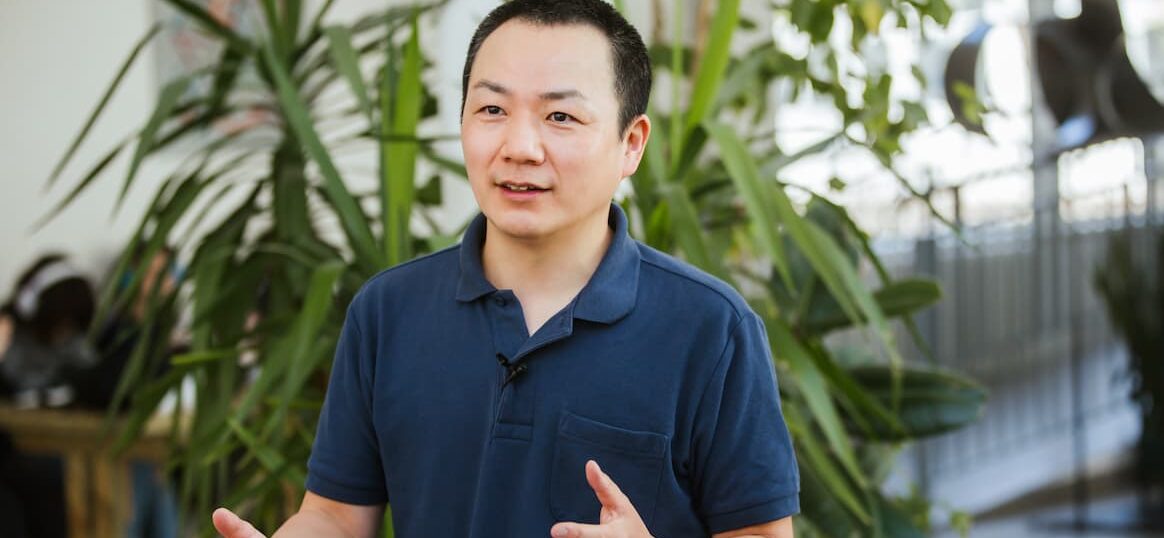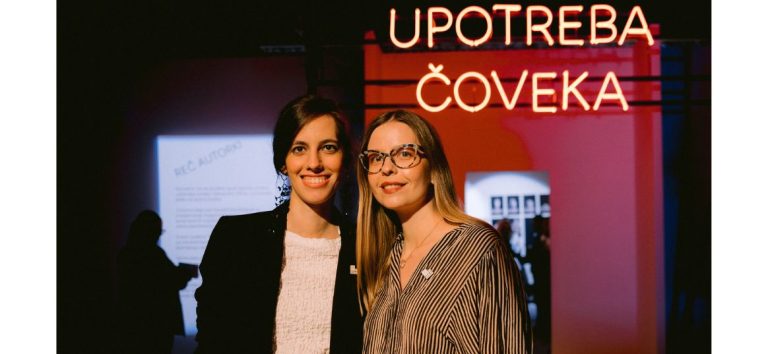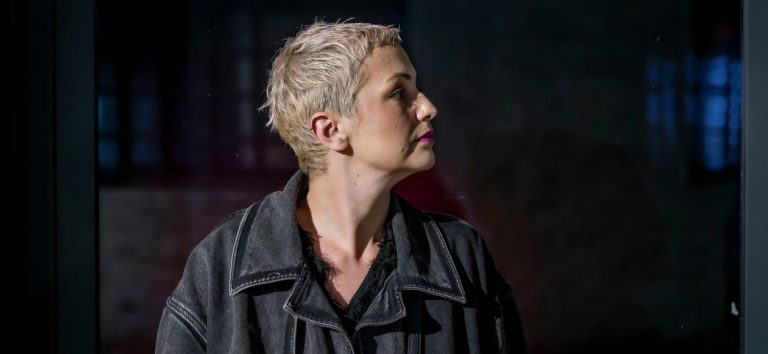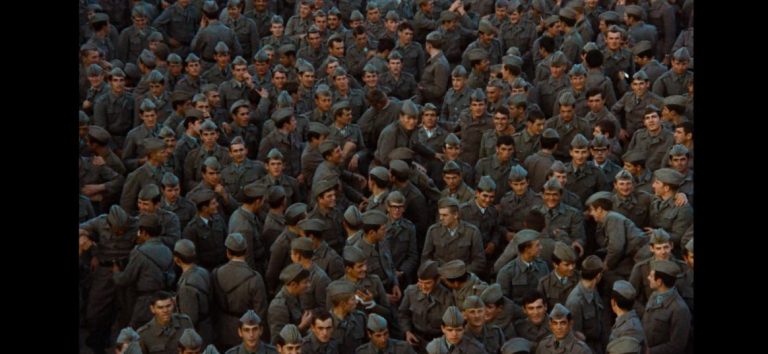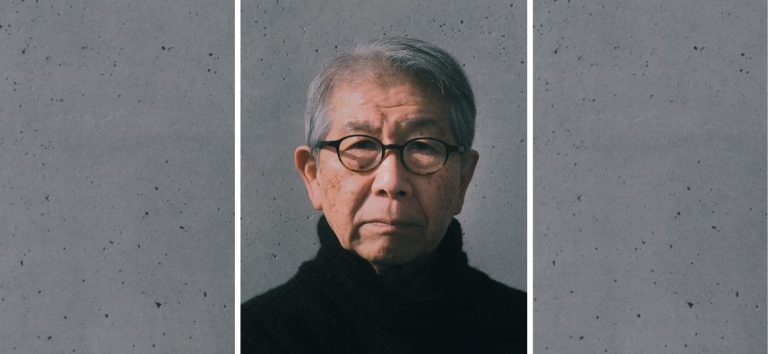European Capital of Culture hosted numerous domestic and foreign artists as part of the School of the Future programme, who, now in the role of lecturers, gave art workshops and lectures to children and young people. Instead of the usual formal education, the schools of the future provide space for free expression, and young people have an unusual opportunity to learn new skills – from artists!
One of the European Capital of Culture guests is the multimedia Japanese artist Akinori Oishi, who hosted art workshops in Novi Sad in the Bogdan Šuput School of Design, the Fortress Elementary School, and the Wonderland kindergarten throughout April. This internationally recognised and award-winning artist is known for painting tiny, smiling characters on various surfaces, so he recently visited the offices of the European Capital of Culture on Liberty Square and painted his interesting characters on our windows with a white marker. We invite you to take a look the next time you walk through the city centre.
Akinori Oishi showed a penchant for drawing at the age of three, and while growing up he found inspiration in European and American picture books, as well as Japanese manga. He was educated at the University of Kyoto, where he graduated in fine arts and developed his skills both in Japan and in France, where he lived for several years. He has experience teaching at the University of Arts in Tokyo, but is very active in the Japanese art scene. So far, he has collaborated with well-known brands such as Mitsubishi Electric, Coca Cola and others. He describes his mini-characters as innocent and pure-hearted and points out that both children and adults love them equally. He enjoys entertaining others with his ‘Aki smile’, by which his tiny characters are a recognizable motif on windows, notebooks, T-shirts, toys…
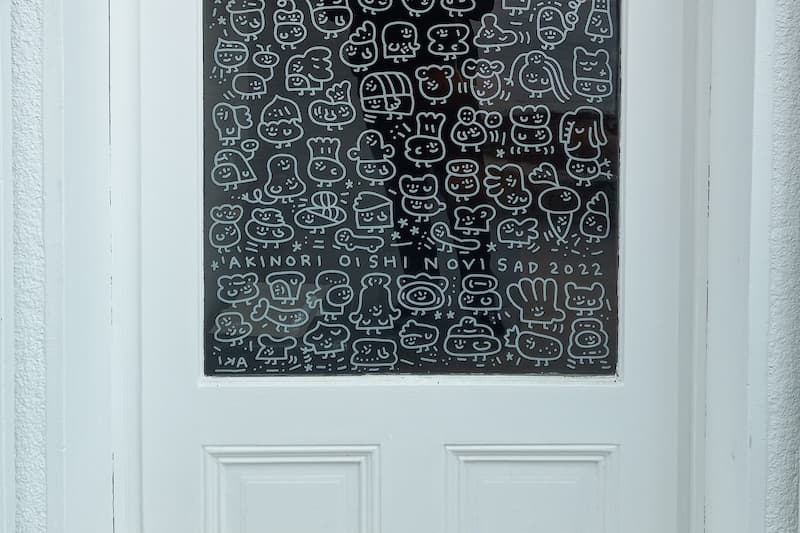
We recently had a unique opportunity to talk to this artist and to share his impressions of Novi Sad, workshops and young people from Novi Sad with whom he worked hard every day, and he also revealed what smiling faces he uses to cheer up the world around him mean to a ‘drawaholic’, like himsel
You’re visiting Novi Sad for the first time, and you will be staying until the end of April. How much time did you have to explore it and what are your first impressions of our city?
I don’t feel that different here, I feel as if I’m home. People are so nice, and my project is going great. I see the city is focused on art a lot and that pleases me. Besides, I’m a big fan of trains, and Novi Sad has a new train built by China, and I’m very happy because of that collaboration with Asian countries. I feel the new train is bringing more opportunities here, and that’s exciting.
You visited schools and kindergartens and held art drawing workshops for young people of Novi Sad. Can you tell us a bit more about this project and what are your impressions of working with young people in Serbia so far?
I think my project is about sharing with people here, it’s called ‘character walk’, and I want to draw everywhere – as much as possible, in many places. I think everybody can enjoy art, and I want to share – my characters are not only for galleries and museums. They are for many places – for example, cafes, hotels, and art schools, and if I can draw in many places, I can share my characters with everyone. And I want to show that my little sketches have many possibilities. I go to many places, in Europe – to Germany, Switzerland, France, and in Asia to Korea, China, and Japan. And it’s also a communication tool, and with my character, I can talk to everyone. And when I draw and people feel happy, I share my happiness with them. My art is fun. I like drawing, so I keep on drawing all the time and share my happiness with everyone.
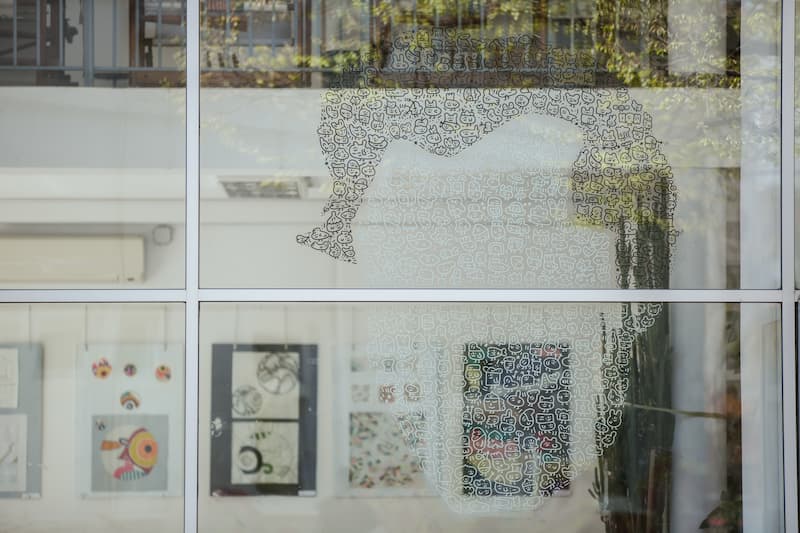
Do you plan your characters and what you’re drawing in advance, or it just comes to you when the felt pen hits the surface?
My art is more improvised, more freestyle. I draw every day in my sketchbook, so there’s no need for sketches. It’s like my character is kind of a pattern – sometimes it has meaning, but you need imagination – it’s interactive, between me and the person watching. Sometimes art is about skill, and sometimes I just draw and draw and draw, and when I make a mistake, it creates something new. It’s like improvisation, like discovering.
How did you decide on drawing your tiny characters and what was your artistic journey like?
I’m a bit smaller man, so I always wanted to be taller. I always feel like I’m small, so it’s like the small character is representative of me. But many small characters put together are more powerful and have more impact. That means more possibilities for a small character, more for me to draw. I think art is my way of communicating with people. Even here, I don’t speak Serbian, and even though my art is not a language, we can communicate through it.
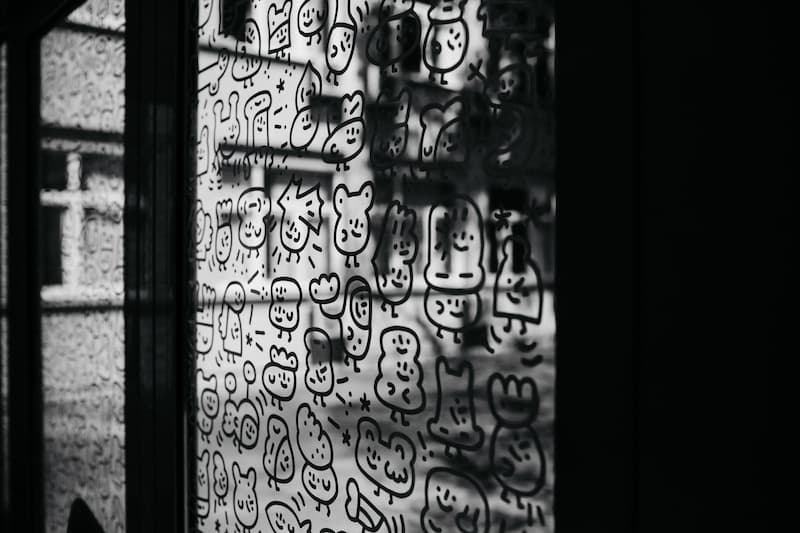
When you work with children and young people, how do you approach them and how do you approach your work?
When I draw, they’re interested in me and my smile. It’s like becoming friends over something. The more friendly my art is, the more communicative they are.
Do you consider yourself a mentor to young people, and do you think it’s important for young people?
I don’t know about being a mentor, but I can teach them to enjoy art. I just want to communicate through drawing, and I think it’s important for everyone to find their point of view.
What are your other hobbies in life besides art?
I am almost 50 years old, and I have kids and a family life. It’s very important to me to spend time with my daughter and son. It’s kind of like my hobby.
Authors: Marina Marić, Feđa Putnik
Photo: Marko Pudić

